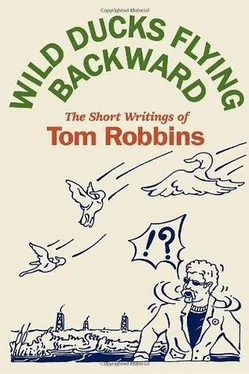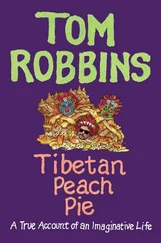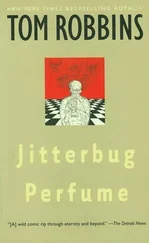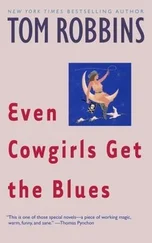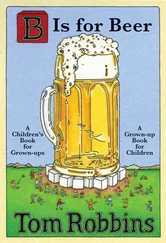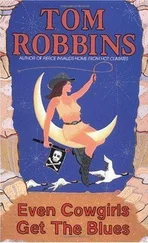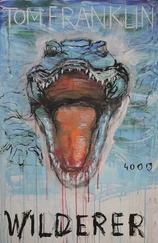It is their desire to honor L. Cohen, songwriter, that has prompted a delegation of our brightest artists to climb, one by one, joss sticks smoldering, the steep and salty staircase in the Tower of Song.
There is evidence that the honoree might be privy to the secret of the universe, which, in case you’re wondering, is simply this: everything is connected. Everything. Many, if not most, of the links are difficult to determine. The instrument, the apparatus, the focused ray that can uncover and illuminate those connections is language. And just as a sudden infatuation often will light up a person’s biochemical sky more pyrotechnically than any deep, abiding attachment, so an unlikely, unexpected burst of linguistic imagination will usually reveal greater truths than the most exacting scholarship. In fact, the poetic image may be the only device remotely capable of dissecting romantic desire, let alone disclosing the hidden mystical essence of the material world.
Cohen is a master of the quasi-surrealistic phrase, of the “illogical” line that speaks so directly to the unconscious that surface ambiguity is transformed into ultimate, if fleeting, comprehension: comprehension of the bewitching nuances of sex and the bewildering assaults of culture. Undoubtedly, it is to his lyrical mastery that his prestigious colleagues now pay tribute. Yet, there may be something else. As various, as distinct, as rewarding as each of their expressions are, there can still be heard in their individual interpretations the distant echo of Cohen’s own voice, for it is his singing voice as well as his writing pen that has breathed life into these songs.
It is a voice raked by the claws of Cupid, a voice rubbed raw by the philosopher’s stone. A voice marinated in kirschwasser, sulfur, deer musk, and snow; bandaged with sackcloth from a ruined monastery; warmed by the embers left down near the river after the gypsies have gone.
It is a penitent’s voice, a rabbinical voice, a crust of unleavened vocal toast — spread with smoke and subversive wit. He has a voice like a carpet in an old hotel, like a bad itch on the hunchback of love. It is a voice meant for pronouncing the names of women — and cataloging their sometimes hazardous charms. Nobody can say the word “naked” as nakedly as Cohen. He makes us see the markings where the pantyhose have been.
Finally, the actual everyday persona of their creator may be said to haunt these songs, although details of his private lifestyle can be only surmised. A decade ago, a teacher who called himself Shree Bhagwan Rajneesh came up with the name “Zorba the Buddha” to describe the ideal modern man: a contemplative man who maintains a strict devotional bond with cosmic energies, yet is completely at home in the physical realm. Such a man knows the value of the dharma and the value of the deutsche mark, knows how much to tip a waiter in a Paris nightclub and how many times to bow in a Kyoto shrine; a man who can do business when business is necessary, yet allow his mind to enter a pine cone or his feet to dance in wild abandon if moved by the tune. Refusing to turn his back on beauty, this Zorba the Buddha character finds in sensual pleasures not a contradiction but an affirmation of the spiritual self. Doesn’t he sound a lot like Leonard Cohen?
We have been led to picture Cohen spending his mornings meditating in Armani suits, his afternoons wrestling the muse, his evenings sitting in cafés where he eats, drinks, and speaks soulfully but seductively with the pretty larks of the street. Quite possibly this is a distorted portrait. The apocryphal, however, has a special kind of truth.
It doesn’t really matter. What matters here is that after thirty years, L. Cohen is holding court in the lobby of the whirlwind, and that giants have gathered to pay him homage. To him — and to us — they bring the offerings they have hammered from his iron, his lead, his kryptonite, his sexual nitrogen, his gold.
Tower of Song, 30-year tribute album, liner notes, 1995
With the exception of chocolate dentures, there’s probably nothing in this world more impractical than glass shoes: their life expectancy must be as short as their discomfort level is horrific. So, was Cinderella a naïve ditz, a dingbat with masochistic tendencies? Did her fairy godmother, who presumably possessed the power to conjure up the finest Milanese leathers, have a twisted sense of humor? Or was there some hidden logic behind sending the humble little hearth honey to the royal ball shod in brittle silica?
Surely, the last. Fairy Godmother’s intention obviously was to try to entice Prince Charming (alas, not the sharpest knife in the drawer) to sip champagne from one of Cinderella’s slippers.
Why? Because no gesture in the annals of romantic behavior is quite as auspicious as drinking a toast from a woman’s footwear. Any dull swain can buy a girl flowers, candy, or even a ring, treat her to a movie or a weekend at a spa, but a man who’ll quaff from a shoe-in-use is a man who, in the name of love, will stop at almost nothing. The woman so honored may be absolutely confident that this date-night daredevil is not among the faint of heart. If only at floor level, he is committed. Better yet, the dude is fun!
Walking as it does a thin line between exhibitionism and intimacy, between chivalry and perversity, the very act of the shoe-sip allows debonair zeal to vibrate ever so slightly with the distant thrill of kinkiness. Symbolism aside (see Freud on shoes), it flirts with danger, even should the risk involved be nothing greater than a stained insole. (A real sport will later blot the lining dry with a clean handkerchief or the tail of his shirt.)
Flavored, if only in the imagination, with the sweet pink of toe meat; barnacled with tar, bubblegum, or something much worse; a friend of the earth, survivor of tack and shard; tasseled tramp, buckle-bedecked blistermeister, grunt soldier bearing the muddied flag of fashion, sailor of the woven and grouted seas; streetwise, dance-dizzy, blind as an ol’ blues cat, the lowly shoe — no matter how elegant or expensive, a slipper can never conceal its utilitarian roots or its kinship to beasts — the shoe must be shocked to suddenly find itself a vessel ferrying luxurious bubbles to a lover’s lips. And its astonishment only mirrors the surprise of its owner, for no female, not even a Gabor or Lola Montez, is ever so jaded as to be prepared for, or unimpressed by, the man who impetuously and ceremoniously sates his thirst from her pump.
For all of its spontaneity, however, the impromptu shoe-swig does possess a certain protocol. While there may be something verbally poetic about slurping a Singapore sling from a slingback or chugging cappuccino from a Capezio, those variations, in practice, will never do. The chosen shoe may be any color or style — so long, of course, as it isn’t open-toed or pathetically orthopedic — but the beverage consumed from it can be only champagne. No beer, no gin, milk, tea, Diet Coke, or bathwater; not even a fine cognac or vintage bordeaux. Champagne, and champagne alone, with its fizz of stardust, its gilded sparks, its secret singing and tiny bursts of light, only champagne has the magic to transform a shoe into a holy chalice, and the shoe-sup (on the surface of it, a rather silly piece of business) into a kind of wild kinetic sonnet, a pantomime of reckless adoration.
Because of the manner in which it combines playfulness with passion, the way that it both galvanizes the moment and anticipates the future, imbibing champagne from a suitable slipper may constitute the perfect salute to the new millennium.
When the little cobbled skiff of womanhood is swamped with Mumm’s Extra Dry, when that pedestrian article that cushions the heel and supports the arch is invaded by the tongue, when devotion is enlivened by audacity, and longing refuses to limit itself to conventional expression, well, anything can happen. Anything.
Читать дальше
